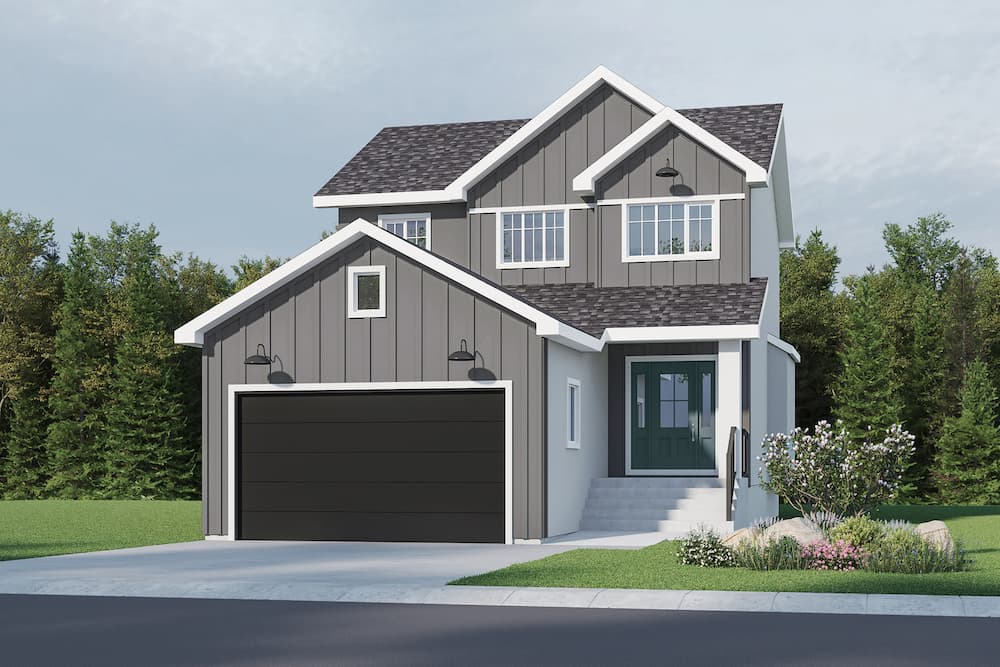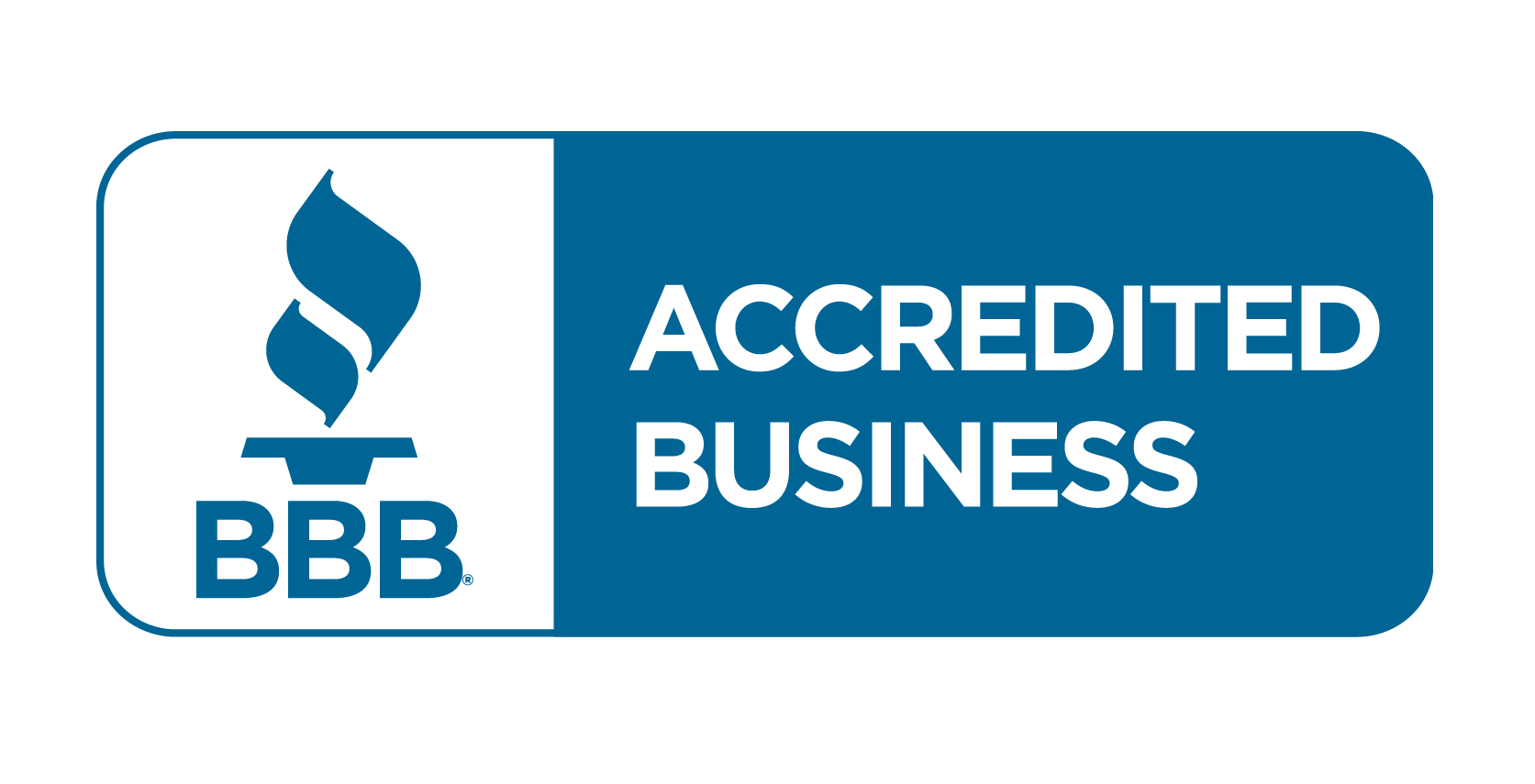Building a New Home in Winnipeg

Winnipeg is a mid-sized city with a population of just over 800,000. With an abundance of things to see and do and a lower cost of living compared to other larger Canadian cities, Winnipeg offers a fantastic opportunity for all homebuyers.
A typical homebuyer in Winnipeg gets a lot more home for their money compared to larger Canadian housing markets.
According to the Winnipeg Real Estate Board, the average price of a detached home in the greater Winnipeg area was just over 500,000 dollars, while larger cities such as Toronto and Vancouver were averaging 1.2 million and 1.4 million dollars respectively (based on June 2002 data).
Despite recent real estate pricing swings experienced throughout North America, Winnipeg’s historically stable housing market remains affordable for most homebuyers.
For many, building a new home offers many advantages compared to exploring older houses on the traditional resale market.
This guide is for anyone who is considering building a brand-new home with one of Winnipeg’s many experienced home builders.
What This Guide Will Cover:
Chapter One: Resale, New Construction, and Pre-Construction – What’s the Difference?
This chapter will explain some of the different home-buying options that you will have in Winnipeg’s real estate market.
Chapter Two: Is it Worth Buying a Pre-Construction Home?
In this chapter, you will learn about some of the advantages of buying a pre-construction home. This chapter will help you decide if buying pre-construction is the right decision for you.
Chapter Three: The Purchase Process
Chapter three will give an overview of the purchasing process for a pre-construction home. It will include some of the steps that a typical home builder In Winnipeg will guide you through including lot selection, customizations, and making deposits.
Chapter Four: Phases of Home Construction
Chapter four will cover some of the construction phases that go into building your house. You will learn about construction time frames and what variables can affect them.
Chapter Five: Taking Possession
Chapter five will cover all that you need to know about taking possession of your new home, including a handy checklist to help keep you organized.

Resale, New Construction, and Pre-Construction – What’s the Difference?
If you have ever went online to look at homes then you have probably come across terms such as “resale home”, “new construction home” and “pre-construction home”.
Here are some of the main differences between them as well as some common terms that they are often referred to as.
New Construction Homes
A new-construction home is a residential dwelling that is new and has never been occupied.
The term can refer to a recently completed home that is move-in ready, or it can refer to a home that is currently under construction by a home builder.
When a home is finished and move-in ready, the term new construction home is often interchangeable with:
- Quick possession home
- Immediate possession home
- Move-in ready home
- Inventory home
- Spec home
- New build home
It is not uncommon for a home builder to build several new construction homes in speculation, or to keep up with local demand. This way, the builder can appeal to homebuyers who are in the market for a new build home with a quick possession timeframe.
Possession dates for quick-possession homes range anywhere from immediate possession (move-in-ready) to several months (3-6 months) depending on the stage of construction.
For a new construction home, the home model and layout of the home are predetermined by the home builder, but depending on the stage of construction, many quick possession buyers still can personalize many features such as fixtures and finishings to make the home truly unique.
Pre-Construction Homes
A pre-construction home is a home that has been bought as a land and home package from a home builder. The buyer will start by selecting a lot within a community and will then work with the home builder to discuss models, floor plans, and other design features and customizations.
Pre-construction homes are also often referred to as:
- New build homes
- Semi-custom homes (depending on the type of builder.)
- Pre-sale homes
Possession dates for pre-construction homes can typically range from 9-12 months. Weather-related events, supply chain issues, and labor shortages are examples of external forces that can delay construction.
Resale Homes
A resale home is a home or residential dwelling that has been previously occupied and that is not considered a new construction home. Resale homes make up most of the housing stock and are also often referred to as existing homes.
The Canadian Real Estate Association reports on national monthly resale data. The report includes data on price trends, sales volumes, and other data related to the real estate market.
In the U.S.A., the term resale home sales is more frequently referred to as existing home sales.

Is it Worth Buying a Pre-Construction Home?
Pre-construction homes are a popular choice for those looking for a new home. There are many advantages to pre-construction homes, including the ability to build exactly what you want. Pre-construction homes also offer the opportunity to live in a brand-new home with all of the latest features.
Just like any real estate transaction, there are also some risks associated with pre-construction homes.
With our unpredictable market, it can be difficult to foresee if you are going to be able to sell the new home for a profit when it comes time to sell.
Ultimately, the decision to buy a pre-construction home is a personal decision that depends on your specific needs and goals.
As a rule of thumb, if you are looking to build and customize your next forever home, than buying a pre-construction home can be the perfect solution for you.
What are the benefits of buying a pre-construction home?
1. Choosing Your Lot
One of the main advantages of pre-construction homes is that they offer a wide range of choices when it comes to lot selection. New build homes are often built on large tracts of land, giving homebuyers the opportunity to choose from a variety of different lots.
When choosing a lot for pre-construction homes, there are a few things to keep in mind. First, consider the size of the lot. Homebuyers should make sure that they choose a lot that is large enough to accommodate their needs.
Second, consider the location of the lot. Homebuyers should choose a location that is convenient for them and that offers easy access to essential amenities within their community.
Choosing the right lot to build your dream home on is an important decision. That’s why we are in the process of creating a comprehensive guide to learning lots about lots.
Leave your email and we will make sure to send it to you once it has been completed.
2. Choosing Your Builder
Another benefit to buying a pre-construction home in Winnipeg is that you get decide which home builder will be building your house.
The freedom to choose a reliable, well-established homebuilder with experience building new homes in Winnipeg is big advantage.
The process of building any new home comes with some inherent risks, and you want to make sure you are working with a trusted and reliable company that has your best interests at heart.
Make sure you do your due diligence and ask the builder lots of questions before getting started. Common questions to ask could be:
- What is the company’s reputation in the market?
- What types of communities do they typically build houses in? Are these communities the right fit for me and my family?
- Do they build durable, sustainably designed homes using the best quality materials?
- Do they have experience designing and building homes for Winnipeg’s cold winter climate and hot summers?
- Are they focused mainly on making a sale, or are they working diligently to get you the best solution for your needs?
- Do they design houses that will meet my needs now and 10 years from now?
- Do they have a solid new home warranty program to protect my investment?
Seeking answers to these questions can make all the difference in getting the house you envisioned at the price you were expecting. As your new home is likely to be one of the biggest investments of your life, it’s important you find the right fit!
The main things to look for when choosing a builder are: how long the build will take, the quality of the materials being used, and if the builder has any previous experience.
3. Choosing Your Floor Plan
Pre-construction homes are a great way to get exactly the home you want. When you build a new home, you work with the home builder to design a home that suits your specific needs and preferences.
When you consult with a home builder, they will be able to show you a variety of floor plans and options for customization. They will help you select the model and floor plan that best suits your needs and budget.
4. Choosing Your Features and Upgrades
One of the perks of building new is that you get to pick and choose from a host of upgrades to include in your home plan, from structural options and finishes, to furnishings, fixtures, and appliances.
With so many choices, it can be challenging to identify where to best invest your money. Your design team will work with you to understand your lifestyle, values, and interests to help guide you through the process and propose options based on your needs and preferences.
The most popular upgrades we tend to see at Kensington Homes include:
- Extra Bedroom – Many home buyers choose to add an extra bedroom to accommodate a large or growing family, or simply to serve as a guestroom for out-of-town visitors.
- Loft – Creating a loft above the great room can create some extra space for rest, relaxation or accommodating guests while costing less than a new bedroom.
- Study – With more people working from home than ever before, a purpose-built study can function as a home office or simply a place to relax and get some quiet work done.
- Finished Basement – Finishing the basement can add a lot more usable space to your home and create more value down the road when it comes time to sell.
- Widening the Garage – Most customers find that creating more garage space is always a good investment. In addition to providing more room for parking, tinkering, or even entertaining, more garage space also tends to increase the resale value of your new home.
- Great Room Cantilever – Building a cantilevered space for a fireplace or entertainment unit is a fantastic way to save space and make a strong and sophisticated design statement.
- Lighting – Great lighting can make a big difference in the look and comfort of your home by adding warmth and ambiance while highlighting key features within your home.
- Windows – Adding more windows or substituting larger windows are great ways to bring additional light into your space. Also, investing in quality high-performance windows can save you even more on energy costs.
- Flooring – Adding durable, stylish vinyl plank or tiles can create a contemporary look while being easy to maintain and keep clean.
- Countertops – Upgrading countertops and kitchen surfaces is a surefire way to create a ‘wow factor’ while making a lasting impression.
5. Pre-Construction Home Warranty
Your builder’s overall warranty package will ensure you are protected from common issues that may arise as your new house settles into its first few years of existence.
To make the most of your new home purchase, we recommend spending some time carefully reviewing your new home warranty package. By understanding what is included, what is excluded, and how to properly operate and maintain your new home, you’ll be well on your way to making the most of your investment.
6. Choosing Your Community
Choosing where you are going to live is one of the most exciting parts of any home-buying journey. Winnipeg offers a range of exciting new communities, each with unique characteristics, price points, and features.
Whether you’re looking for a dynamic neighborhood packed with amenities like shopping, arts, and entertainment, or prefer more of a laid-back rural vibe off-the-beaten-path, Winnipeg has some great new communities for you to find the perfect place to build your new home.
Many new communities can be found around existing residential developments, while others are located just outside city limits. Building a new home in the city compared to options beyond Winnipeg’s perimeter both have advantages that buyers should familiarize themselves with.
Inside the City – Advantages
- Closer to established areas and downtown
- Connected to City infrastructure including water, sewer, power, and gas lines
- Connected or close to active transportation routes
Outside the City – Advantages
- Lot sizes tend to be much larger
- Lower municipal property taxes
- Quieter neighborhoods
A Look at New Home Warranties
Know What’s Covered
Your new home warranty is designed to protect your home from unexpected issues that can arise with any new construction project. Kensington Homes’ new home warranty program goes above and beyond the standard industry warranty, offering a broad range of coverage for a period of up to 10 years.
In the first year of your warranty program, you will be covered against defects in the materials, labor, and design.
Defects in the plumbing, heating, and electrical distribution systems are covered for the first two years.
Building envelope defects, including the roof, exterior walls, windows, and doors, are covered for up to five years, while structural defects are protected for up to 10 years after purchase.
What to Expect with a Warranty Claim
You’ve settled in, fixed the deficiency repairs identified in the final walkthrough and are following your new home’s regular maintenance and operations instructions.
Suddenly, the furnace stops working. What do you do?
Don’t sweat! If a mechanical system has stopped working during the warranty period, you can relax knowing you will not have to pay for costly repairs.
When making a warranty claim, it’s best to reach out to the Warranty Manager identified in your warranty document. We recommend reaching out by email with a quick description and photo of the problem, and your Warranty Manager will take it from there and follow up with you.
In some cases, your warranty claim repairs or replacement will be addressed by the builder’s service team, and in others, it will be delegated to the appropriate third-party trades representative who will arrange a time to visit your home and rectify or repair the problem.
The best builders and associated trades providers will make your call a priority and will attend to the matter as quickly as is possible. Afterall, they have an interest in you and your family having the best possible experience with your new home, even when unexpected issues arise.

The Purchase Process
Sales Representative or Real Estate Agent?
The process of building a new home differs in many ways compared to buying a home on the resale market.
For starters, instead of negotiating with the seller’s agent as in a typical real estate transaction, you’ll be negotiating directly with the builder or its parent company for all aspects of the sale.
For example, our sales representatives at Kensington Homes are employed under the Qualico Realty banner. Each one of our sales representatives are licensed real estate agents who follow the standards set by the Canadian Real Estate Association.
You may find that some builders will refer to their sales team members as area sales managers. This is because each sales representative will typically be responsible for all of the new home sales in a designated area or new community.
Your sales representative’s main role is to help you determine the right type of home for your needs. They will help you find the right community, the right model, at the right price.
They will negotiate with the builder on your behalf and help you navigate your preferences when selecting from a wide range of customization options.
One of the best parts of buying a new home is there are no bidding wars with other hungry house hunters. According to Royal LePage, 63 percent of homes sold in Winnipeg’s re-sale market went for above-asking price in 2021.
What Happens if I You Want to Use Your Own Real Estate Agent?
Depending on your circumstances, you may have an existing realtor that will also be assisting you.
While you don’t specifically need a real estate agent to purchase a newly built home, many homebuyers choose to work with one for a variety of reasons. For example, you may be considering selling your existing property and working with a real estate agent to assist with the process.
Either way, well-established companies will work directly with you or your agent throughout the process. If you’re with an agent, they will earn a commission on the sale just like on other real estate transactions.
If you decide to hire a realtor, we suggest you find someone familiar with new home real estate in Winnipeg, as there are some fundamental differences from the resale market. Ideally, your realtor has some experience working with new home builds in Winnipeg to help guide you through the process.
Securing Your Lot
In your search for the right community, you will have probably come across a few lot maps. Lot maps are used by the community developer and the group of home builders to manage inventory and lot availability.
Lot maps are a great tool for anyone doing research online as well. You can use the tool to see which lots have show homes to visit, quick possessions to buy, or which lots are empty and available for pre-construction building.
When you find a lot that you like, it is a good idea to contact the builder as soon as possible so that you can secure the lot. By securing the lot, you are temporarily preventing any other buyers from building on it.
Securing the lot will require a small deposit of one or two thousand dollars depending on the home builder. This shows the builder that you are ready to take the building project seriously. This deposit is typically fully refundable if you choose not to accept the offer to purchase.
After paying the deposit you can organize a meeting with the builder to have more detailed conversations about your floor plan design and other customizations for your project.
Model and Floor Plan Design
It’s important to understand that design changes to model homes do have certain limitations. Your sales representative will work with you to go over the available options while also advising you on anything that is considered out of scope. Make sure to come to your first design meeting prepared, as they will have lots of questions for you!
First, think about how you want to use each room in your home. Do you need a formal living room or dining room, or would you prefer a more casual family room? Consider how many bedrooms and bathrooms you will need, and whether you would like any extra rooms such as an office or den. Once you have an idea of how you want to use each space, you can start narrowing down your options.
Second, consider the size of your lot and the placement of your home on the property. If you have a large lot, you may want a floor plan that includes outdoor living spaces such as a patio or deck. On the other hand, if your lot is smaller, you may need to choose a more compact floor plan that makes efficient use of the available space.
The size of the lot and the developer’s architectural guidelines will ultimately determine which of the available home models you are able to select from the builder.
Framing is often considered one of the most expensive parts of home construction. In this stage, your customizations can have the biggest impact on the total investment. For example, expanding the floor plan or garage to add more square footage will require more materials.
Honesty and transparency from both parties are critical in this process so that there are no surprises and so that you can accurately get an idea of how much customization will be realistic for your budget.
How Much Deposit Do I Need to a New Build?
Your will typically need to make a deposit of 5-10% of the total investment to begin the building process.
Once you’ve selected the perfect home model, and you have gone through the process of selecting any structural upgrades that you wish to have in your new home, you will be given an offer to purchase.
An offer to purchase can sometimes be referred to as a purchase agreement. The agreement outlines the price of the home and is complete with a design specifications package.
If you want to accept the offer, you sign the agreement and send it to your builder along with your deposit. This deposit is nonrefundable. It gives the builder confidence that you can afford the total investment at the time of possession.
Interior and Exterior Selections
designQ allows new homebuyers to meet with one of our experienced design team members to go over all the various personalization options for your interior and exterior selections.
designQ is Qualico’s award-winning design centre, where new homebuyers experience, feel and see for themselves all the available design upgrades while meeting with our experienced design team.
Here, you’ll work exclusively with one of our dedicated interior designers where you will select the design elements that will make your home truly one-of-a-kind.
Before arriving at designQ, your designer will send you a catalogue detailing all the different standards and personalization options. This will help you prepare by giving you a sense of what is available in advance of your design appointment.
The goal of the meeting at designQ is to establish all the interior and exterior customizations you desire while helping to price out these modifications for your final approval.
Once your final selections are made, they are sent to the various manufacturers and suppliers for quotes. After you get your quote, you can choose to proceed with the design changes or scrap them in favour of the standard versions already specified in your new house.
Following sign-off on all your preferred design upgrades, the difference in price from the original purchase agreement will be added onto your new home’s final purchase price.
Once these final changes are documented by the design team, your representative will review the design drawings with you one more time for sign-off before sending them off to production.
To Upgrade or Not to Upgrade – How Do I Decide?
Designing a new home is an exciting journey, but depending on your circumstances and budget, it can be difficult for many new home buyers to decide how much to spend on customized upgrades.
Determining how much to spend, of course, will depend on your personal needs, preferences, and budget. Some people buy new homes for the longer term, while others may see it as an investment opportunity and are considering the value upon resale. These and numerous other factors should be carefully weighed before deciding on what upgrades will work best for you.
Additionally, new home buyers should keep in mind that certain design changes can be done economically after moving in. For example, changing out your plumbing fixtures or adding crown moldings can be completed later, and can sometimes save you money if you choose to do the work yourself.
On the flip side, many common upgrades just make more sense to do together with your builder. For example, selecting laminate flooring or quartz countertops would be best achieved with your builder, since replacing your new countertop or flooring later on will cost significantly more than including it in your home in the first place. Also, most builders purchase these materials in bulk and have access to discounted pricing as part of your new home build.
For the biggest impact, our design team recommends focusing on your kitchen, surfaces, and lighting. These upgrades tend to add significant value to your new home while dramatically impacting overall style, comfort, and ease of maintenance.
Customizing your new home in a way that makes sense for you will depend on numerous personal factors. Fortunately, working with a customer-oriented builder like Kensington Homes will give you the guidance and direction you need to make the right selections.

Phases of Home Construction
The following section describes the sequence of construction for a typical new home build.
Pre-Construction
Pre-construction incorporates the significant planning that has to happen before construction teams can begin building your new home. Following design approval, your homebuilder will be required to obtain a building permit, ensuring all codes and zoning requirements are met.
The permit process involves securing approvals from various municipal authorities and can take some time to get through. If you are buying a house outside Winnipeg, each municipality will differ in terms of its unique municipal requirements as well as processing time.
Your builder will be in contact with you to go over any questions you may have during the pre-construction stage and advise you regarding actions you’ll need to take to move the process forward.
Foundation
After all the regulatory hurdles are cleared and permits are in place, your construction team will mobilize on-site and begin to excavate your basement and form the foundation that will support your new home.
Most new home foundations in Winnipeg today are built with piles instead of slab-on-grade concrete to prevent the shifting that can occur in Manitoba due to natural forces and local soil conditions.
Once the piles are, in, foundation walls begin to go up and rough-ins for plumbing and utilities are installed. After the foundation work is done, the city or municipality will require a foundation inspection to ensure it meets all standards and requirements.
Framing
During the framing stage, the walls, flooring, and roof of your new home start to take shape. Openings for windows and doors are constructed and sheathing and protective wrapping is applied to close-in the home from the elements. Kensington Homes is known for producing well-insulated, virtually air-tight homes which can provide big energy savings over time.
Once the home is sealed off, electrical wiring and mechanical systems are installed, making the house one step closer to completion. With Winnipeg’s cold winters, builders strive to ‘close-off’ the home before winter arrives, allowing interior work to continue unabated during the chilly days of winter.
Once framing is complete, there will be another round of inspections by authorities to ensure the home meets Manitoba’s stringent building code. These inspections are carried out by the regional building
inspectors and Manitoba Hydro. Upon approval, work will begin adding insulation to protect your home against the elements.
At this point in time, you will be invited to visit your home for the first time while under construction to see the progress and address any of your questions.
Interior and Exterior Work
As your home is under construction, your builder will keep you informed on various milestones and deadlines by email, as well as advise you on your final possession date. A variety of specialist trades and construction teams will work hard to add all the flooring, windows, plumbing, and lighting elements according to specifications.
The fixtures, finishes, and appliances you selected will be installed, and all the trimmings and final touches begin to transform the build from a construction site to a beautiful new home.
As your move-in date nears, your builder will arrange a final walkthrough to go over all the features and systems in your new house, ensuring you are informed on how to properly maintain and care for it. You’ll also go over a deficiency list to address any touch-ups or other issues required before getting the keys to your beautiful new home.
We’ll cover the final walkthrough in more detail in the next chapter, Taking Possession of Your New Home.
Landscaping and Grading
Landscaping and grading work is generally the homeowner’s responsibility. Once you’ve taken possession of your new home, a grading report will indicate the steps you need to take to ensure your site drainage meets municipal standards.
In many new home developments, there will also be requirements for landscaping to meet a certain standard set by the developer.
Upon receiving your grading report, new homebuyers typically have one year to complete the required grading and landscaping to standards. After successfully passing an inspection for the completed landscaping work, you will be refunded a portion of your deposit held for this purpose.
When budgeting for your new home, it is important to factor in the cost of landscaping your property. To plan for this, speak with your Sales Representative, who will be able to give you some direction on how much you should anticipate investing in this part of your property.
Factors That Can Delay New Home Construction
The complexity of any new home build can sometimes lead to a delay in the timeline of your home’s construction. Many of these factors are beyond the control of any builder, and while frustrating, the possibility of delays should be anticipated and planned for.
Here are some of the common causes of construction delays that can affect your new home build in Winnipeg:
Weather Related Events
As any Winnipegger will attest, weather in Manitoba’s capital can be unpredictable. From cold temperatures to high winds, snow and rain, weather-related delays can slow down the construction process. While seasonal variations are carefully planned for, some construction seasons are inevitably impacted by weather-related events.
Availability of Skilled Labour
From skilled trades to construction workers, labour shortages are impacting construction for new home builds throughout Canada and around the world. While the best builders will tend to attract the most qualified workers, labour shortages can extend the expected completion date for any new home build.
Supply Chain Issues
From countertops and cabinets to appliances and lumber, the construction industry has been deeply affected by shipping delays caused by the COVID-19 pandemic. While these issues have seen improvement with the easing of pandemic restrictions, extended delivery timelines can slow down the pace of any new housing project.
Permitting Delays
Depending on where you build, the overall design, and level of customization on your home, permitting processes take time and they do not always follow a predictable schedule. It’s important to work with a builder who is familiar with the intricacies of the permitting process in Manitoba to reduce the chance of complications.
Change Orders
Change orders are design revisions that are requested after the construction process has already begun. Depending on the nature and complexity of the change order, they can cause delays that impact your anticipated move-in date.
When building a new home in Winnipeg, it’s important to plan for unexpected and unavoidable construction delays. However, by working with an experienced and reputable builder like Kensington Homes, your odds of unwanted surprises during construction can be significantly reduced.

Taking Possession
The lead-up to taking possession of your new home is a very exciting time. You’ve made it through the purchasing, design, and construction stages and are now preparing to move into the newly built house of your dreams.
Amid all the anticipation, it’s easy to overlook some key things to prepare for prior to your possession date.
This chapter focuses on what to expect during the days leading up to taking possession of your new home.
The Lead Up to Possession Day
As we get toward the end of construction, your builder will email you a document that identifies your final possession date. The final possession date is the actual date the home will be ready for occupancy.
The final possession date is provided to you later in the construction process when there is more certainty regarding the timeline. Typically issued 6-8 weeks before move-in, the final possession date letter will require a signature to move to the next stage of the process.
Once the letter is signed, the builder will initiate their internal processes to close the sale. There will be an assortment of closing documents to be completed, including the transfer of title document that will need to be signed by your lawyer as part of the transaction.
We recommend that you contact your lawyer upon receiving notice of your final possession date letter. This should give them enough time to review pertinent legal issues with you and help to secure the title to your new home before the big move-in day.
You also want to make sure to connect with your mortgage lender and insurance agent to ensure the financing and insurance are in place ahead of your final possession date.
Once the internal review and closing process is complete and approved, your builder will arrange a date with you to pick up the keys to your brand-new home!
Final Walkthrough
About a week before taking possession, you will be provided a final walkthrough with the construction site supervisor. The main purpose of the walkthrough is to orientate you on all the systems and features of your home. As part of the process, you’ll also create and sign a deficiency list that identifies any items that may need to be addressed before the work is considered complete.
During the walkthrough, the site supervisor will walk you through all the electrical and mechanical systems and how they work. Everything from your furnace HRV system and hot water heater to fixtures, and features will be explained so that you feel confident in your ability to run your new home properly.
You will also be given a regular maintenance checklist to keep your new home working at its best. It’s critical to be aware of how to use and properly maintain your new home’s equipment and systems, as your warranty will typically not cover damage caused by improper use or lack of maintenance.
Walkthrough Deficiency List
The deficiency list keeps a tab of all the items that should be repaired or modified to meet the manufacturer’s specifications.
Minor deficiencies will likely be addressed prior to move-in, while more serious issues requiring a contractor to fix might take a little bit more time to resolve.
If anything is missed during the final walkthrough or if something unexpected happens weeks and months after move-in, these items will likely be covered under your new home warranty.
Common Deficiencies and How to Avoid Them
In Winnipeg’s climate, homes are subjected to strong natural forces that can result in slight shifting as your home settles. The use of pile foundations, quality materials, and design minimize most of these issues.
With any new construction project, some deficiencies are to be expected, most of which you will catch during your final walkthrough before taking possession of your new home. Some issues like floor squeaks, faulty systems, or even water leaks usually take longer to develop.
Fortunately, as a new homebuyer, you are protected from these potential issues for the period specified in your warranty package.
Many common deficiencies we see at Kensington Homes can be largely avoided by closely following your operation and maintenance instructions in your homeowner binder. Our website also has home care videos with some common issues and fixes.
Your new home will include sophisticated systems that need to be monitored, operated, and maintained according to the manufacturer’s standards.
Perhaps the most important system in your home to master is the heat recovery ventilation system (HRV), which controls the airflow and humidity levels in your new home.
The HRV system regulates airflow and ventilation in your house, providing a constant stream of clean air and regulating humidity levels. Keeping humidity levels within the set guidelines will help to prevent most potential issues relating to shifting and cracking inside your home. You will also help you sleep better at night knowing that you are keeping your home in optimal condition in the face of Winnipeg’s temperature and humidity variations.
From changing your furnace filter to cleaning your AC unit and air ducts, there are many important maintenance tasks to keep your house operating properly while maintaining your warranty protection. Fortunately, your builder will give you all the information and guidance you need to stay on top of things and keep your new home running smoothly.
Tips for Preparing to Take Possession of Your New Home
Be prepared for the tasks that need to be addressed during the possession period. Here are some tips to help you prepare for the process:
- Anticipate Unexpected Delays
The process of building a new home is complex. Be prepared for possible delays moving into your new home. - Connect With Your Lawyer
Make sure you keep in contact with your lawyer throughout the process and give them enough lead time to complete their work. - Get Home Insurance
Contact your insurance provider to make them aware that you will be moving into a new home. Ensure that you set up your coverage to begin before the possession date. - Work With Your Real Estate Agent
As you may be selling an existing home during the move-in process, be sure to work out a plan with your Realtor on when the sale of your existing home should close. - Change Your Address
Be sure to change your addresses by your move-in date so that you don’t miss any important correspondence. Contact Canada Post for advice on how to change your residential address and get the keys to your new mailbox. - Connect with Manitoba Hydro and the City of Winnipeg Water and Waste Department
It is advisable to contact Manitoba Hydro and the City of Winnipeg to ensure your power and water are set up by the move-in date. - Set Up Utilities
Reach out early to your preferred internet service provider and/or cable and telephone provider to arrange for installation upon moving into your new home. - Schedule Movers
We recommend scheduling your chosen moving company to arrive on the day after you are confirmed to pick up your keys. Sometimes, your actual move-in date might come after the date specified if your bank takes longer to approve the purchase and the lawyer’s office is unable to contact our office for the release of keys.
Grading and Landscaping
Chances are, when you move into your newly built home there will be grading and landscaping work that needs to be done.
Grading is the process of leveling the land so that it drains appropriately according to municipal standards. Your builder will work with a certified civil engineer to assess the grading of your property and you will be provided a written engineering report. Homebuyers usually have one- year to complete the work and ensure the property meets grading standards.
Depending on where you build, the developer will also have certain landscaping requirements that must be followed.
Once you have the engineer’s report and the developer’s landscaping specifications, it’s time to hire a landscape company of your choice or, alternatively, complete the work yourself.
As mentioned, you will typically have one year to conduct the required landscaping and grading work, at which point you will be refunded the portion of your deposit that is contingent on this work being completed and passing a required inspection.
Conclusion
Purchasing a new home is one of the most exciting and rewarding investments you can make in your lifetime. It’s a chance to personalize the home of your dreams, lay down roots, and make new memories that last a lifetime.
From understanding the Winnipeg market to purchasing, design, construction, possession, and warranty coverage, we hope you’ve gained some valuable insights to help in your journey of buying a new home in the Winnipeg region.
Winnipeg is a welcoming, friendly city with excellent opportunities for building beautiful new personalized property at an affordable price point. With over 50 years of experience as a leading Manitoba builder, Kensington Homes offers unbeatable value backed by Qualico’s high standards for quality and customer service.
We hope you enjoyed this e-book and welcome you to get in touch with a Kensington Homes Sales Representative today to start a conversation about building your dream home in or around the Winnipeg area.








